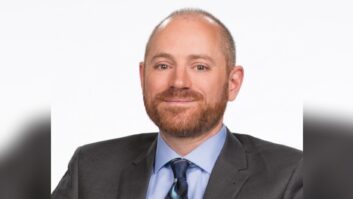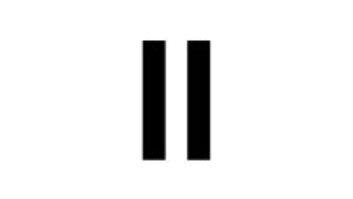
Bud Walters
This is one of a series of interviews from the recent Radio World eBook “HD Radio and the Case for ROI.”
Bayard “Bud” Walters is owner/president of The Cromwell Group, which has stations in Illinois, Indiana, Kentucky and Tennessee. Long focused on startups and small markets, it is licensee of 17 FM stations, six AMs and 23 translators. An early adopter of HD Radio, Walters has paired FM translators with HD multicast channels in a variety of markets. He has five FM translators paired with sub-channels in Nashville, while in Decatur, Ill., an HD2 with FM translator has achieved Nielsen ratings in the 7+ share range. Walters won the National Radio Award from NAB in 2014.
Q: Please summarize what you’ve been doing with HD Radio and ROI opportunities you’ve seen.
A: When the whole thing started, I just honestly wanted to be supportive to the industry. bought the first HD transmitters in Tennessee, I think, and put them on our Nashville station; then we got some lower-[power] transmitters for Kentucky and Decatur, Ill., and put them on the air.
But we really didn’t have a purpose, it was just “do it” — and we did it without the ability to do HD-2 or -3 or -4 [yet]. There was no grand plan. There was no attempt to make any money; I didn’t know how. Later, as translators came into play — this has been over the last four or five years — I could see the opportunity to have differing formats in differing markets.
In Decatur we ended up putting an HD-2 on, which became an urban AC station, and it became a real radio station instantly and monetized instantly. We ended up adding more translators as time went on. In Nashville we have a black gospel station on a translator that runs on the HD-2 of WPRT, and it monetizes.
Then we got some translators in Murfreesboro, Tenn.; they run off of the HD of WBUZ, our rock station [in Nashville]; one of them actually repeats our sports station, WPRT, our ESPN station in Nashville. It’s 100,000 watts but Murfreesboro is just outside its coverage area; so we added a translator down there; and in order to be legal in feeding that translator, it had to come from someplace else; that became WBUZ HD-2. Then we added WBUZ HD-3, and we have a translator in Nashville and in Murfreesboro that repeats it; and it is a second ESPN sports station for us. Then we added a third translator in Nashville recently that goes with our AM; that is now classic hits station.
So in Nashville we have five FM signals. Two of them are FM formats originating on a HD-2 or -3 but feeding a translator; two of them are 100,000 watt FMs; and one of them is a translator related to an AM.
This monetization, both for AM [translators] and for HD-2 and -3, has really come because of the ability to offer a different service and a different format. And the signals are competitive.
In Decatur we added that urban format and put in HD-2, and it monetized. Since then we’ve added a country, it’s on HD-3; and we added a sports station, it’s HD-4. Then just recently we put another HD on in Decatur on WZNX, and it is doing an alternative rock format called The Buzz. So we have four translators in Decatur with programming originating from the HD-2, -3 or -4. That in effect has given us the ability to provide different choices for the public.
It doesn’t necessarily mean tons more business but it means a chance that we have more touch points, and that we don’t have to lose business because we don’t have formats.
Down in Owensboro, we have an HD-2 that is what we’re calling a hip-hop station, The Vibe; and again it’s monetizing. We have the opportunity if we have additional translators to provide another format if we wanted to.
This is a way to justify the HD costs while HD still finds its footing. And I think it will. We’re beginning, as time goes on, to get people who notice that the HD is there, and they’ll notice the HD-2 is there.
Q: What is the consumer awareness of multicast signals? Or is it really just a two-step process in which the translator is your end game?
A: Right now the translator is the end game — though, if you think about it, we’ve got a programming source and it’s going out on a main signal; it’s going out on a HD signal; it’s going out on a translator signal; it’s going out on a streaming signal; it’s going out on a mobile signal. They’re all equal. Our challenge really is to have unique programming that we can put out on all these things in our local areas so that our local people want to come to us at least some of the time.
Q: What advice would you give to a smaller broadcaster? Would it be worth the investment to transition to digital based on the revenue opportunities?
A: Maybe on future revenue opportunities. My opportunities with these transmitters came about because we had already done the HD; then I just kind of fell into it. We were in a position to take advantage of the opportunity as opposed to trying to have to make an overt decision.
Most things we’re doing in our broadcast world today, you know, are really opportunistic. If we as licensees don’t try to think ahead, we’re never in a position to take advantage of those opportunities that the FCC offers. You can look at what happened with translators in AM; some guys took advantage of it and were prepared, and other people weren’t. As it relates to HD, some broadcasters started using their translators to rebroadcast the HD-2, -3 signal. That received FCC blessing and now some of those people have opportunities that others have not yet taken advantage of.
Q: We’ve heard of leasing arrangements and sports teams using HD-2s. Are there other ROI strategies?
A: There are some folks that are using some unique formats on them but the listeners are not there. Nielsen hasn’t figured out how to handle this. … Nielsen wants to call the signal, in our case let’s say, WPRT HD-2, or D2. Well, that doesn’t tell what the station really is. There’s still some evolution yet to come that has to do with the ratings, which then leads to monetization. I would say Nielsen’s holding monetization back.
Q: Any other thoughts?
A: Of course we wanted to build them, but we wanted to do them in the most reasonable way that we could. Hopefully the prices will come down, and hopefully DTS will price their royalty payment in a way that it makes the pricing more reasonable for somebody to want to consider buying a digital transmitter.
If you’ve got Nielsen figuring a way that they can report this stuff so it can be monetized, and if you have DTS or the company that just bought them [Tessera Technologies] looking longer-term about their revenue opportunities if more stations are on digital, they are in a position to make it more affordable to broadcasters to want to consider it.
In the past iBiquity was pretty much strapped for cash. They didn’t have the opportunity to have a lot of room in what they did, whereas these new players are thinking farther down the line, they’ve got more assets and more capabilities in working with the automobile manufactures to make HD more important in the automobile and for different services that they may be providing.
For us as broadcasters it’s important that we consider the long term, and even in the small towns to, when you’re buying a new transmitter, to make it an HD transmitter. That’s the approach we will take.












